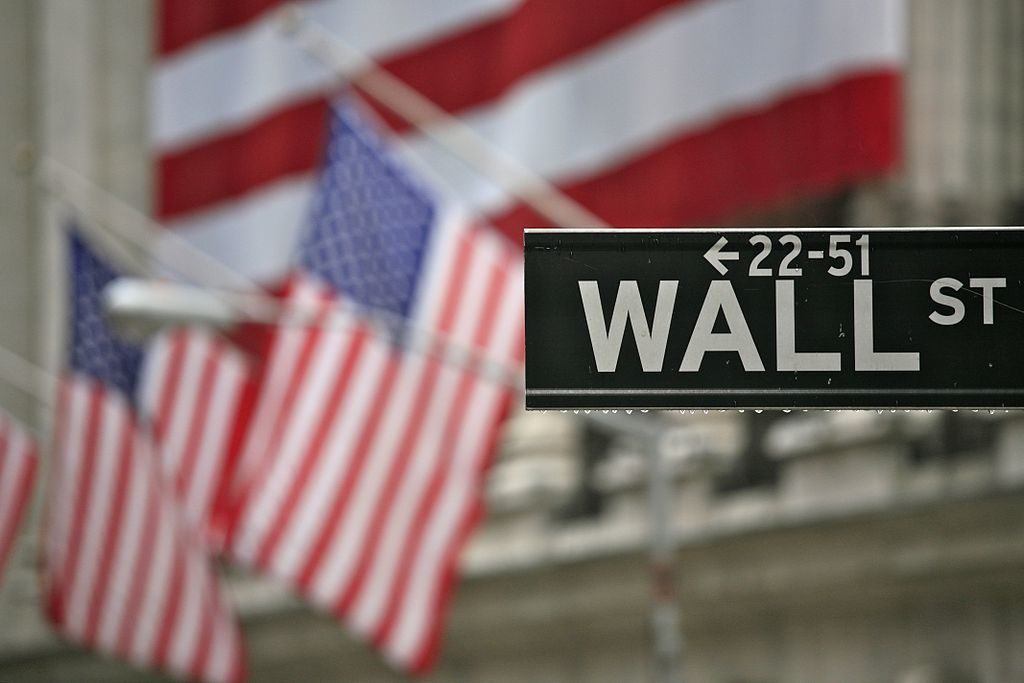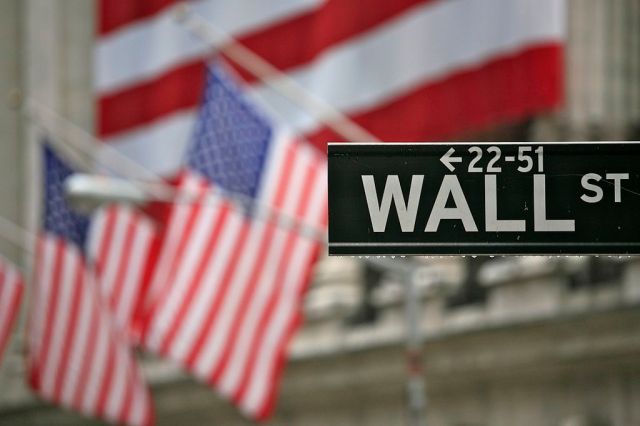WALL STREET BANKS LIKE GOLDMAN SACHS ARE ACCUSED OF HAVING TOO MUCH POWER IN US POLITICS AND OF CAUSING POLICY TO FAVOUR FINANCE OVER MANUFACTURING. CREDIT: ALEX PROIMOS FROM SYDNEY, AUSTRALIA.

To the surprise of no one, President Donald Trump recently told the Wall Street Journal that he is seriously considering naming Gary Cohn, currently the director of the USA’s National Economic Council as chairman of the Federal Reserve. Though the president hasn’t known Cohn for long, the NEC director has become the indispensable man in Trump’s White House, with a hand in all major economic policy decisions. This is despite the fact that Cohn had never previously served in government, let alone in the upper reaches of the executive branch.
What is it that prepared Cohn for the enormously influential role he now plays in the American and by extension the global economy? Prior to joining the Trump administration, he spent almost 27 years working for Goldman Sachs, culminating in almost 11 years as president and chief operating officer.
Goldman Sachs has long been one of America’s premier investment firms and in recent decades has emerged as a principal breeding ground for senior government officials. Robert Rubin’s tenure as Bill Clinton’s Treasury secretary helped cement Goldman’s place in the corridors of power. As the chief architect of “Rubinomics,” Rubin is widely credited with steering the Clinton administration towards an emphasis on balanced budgets and lower trade barriers.
Not to be outdone, George W Bush appointed more than his fair share of Goldmanites, up to and including his chief of staff Josh Bolten. Hank Paulson, who served as Bush’s Treasury secretary during his tumultuous second term, engineered the widely-loathed Wall Street bailout of 2008 with the help of a small army of former Goldman colleagues, most notably Neel Kashkari, who is now the influential president of the Federal Reserve Bank of Minneapolis.
One might think that the pointedly populist Trump administration would avoid Goldman like the plague – not least because Trump had been consistently so scathing in his denunciations of Wall Street elites over the course of his political campaign – but one would be wrong. Goldman alums serving in the Trump administration include Steve Bannon, the president’s chief strategist; Steve Mnuchin, the Treasury secretary; and Dina Powell, the deputy national security adviser. Some of Trump’s Goldmanites worked for the firm longer and more recently than others — Dina Powell, for instance, only left the firm to join the White House; Bannon, on the other hand, hasn’t worked for Goldman since the 1980s.
America’s Ecole Nationale d’Administration
There is something striking about the extraordinary bipartisan reach of this one investment firm, which seems to have become America’s equivalent of France’s École nationale d’administration, the elite graduate school that is known for educating the country’s top bureaucrats and a number of its top politicians, including Emmanuel Macron, the current French president, and his immediate predecessor, François Hollande. While the ENA is a public institution that is at least ostensibly devoted to preparing France’s best and brightest to serving the interests of the country as a whole, Goldman is a profit-driven business enterprise that attracts talented graduates of the world’s elite universities by offering them high salaries and the promise of still higher performance bonuses.
This is not to suggest that Goldman alums are necessarily any less public-spirited than those from the ENA. Moreover, by the time a Goldman alum is in a position to serve in a senior government role, she or he has likely amassed a small fortune (presumably making them less susceptible to petty corruption) and a wealth of experience in a high-pressure work environment, which is of course invaluable. The problem is not that Goldman Sachs produces greedy or thoughtless public servants — it runs deeper than that.
Hoarding talent
Consider the possibility that the concentration of talent in Goldman Sachs and firms like it represents a threat to economic dynamism in itself. Matt Klein, a journalist at the Financial Times, has argued that the outsized growth of the financial sector may have damaged productivity growth in the wider economy. Notably, finance has offered such handsome compensation to its junior employees for so long, it’s hard for firms in other sectors to compete for highly-skilled young workers, the very workers companies need to innovate and to grow. This is especially true for firms in sectors that need a lot of research and development, which is to say a lot of brainpower, and that need a lot of external investment, which can put them in direct competition with the likes of firms such as Goldman that instead channel investment dollars towards, say, mortgage-backed securities.

Bias against the non-financial sector
When the Goldmans of the world then supply government with top bureaucrats, there’s a danger that this bias against the real economy will be reflected in government policy. Over the past thirty years, America’s manufacturing sector has been badly damaged by a series of policies that have eroded its competitiveness while leaving the financial sector largely untouched. For example, the US failed to counter aggressive currency interventions by China and a number of other countries from 2003 to 2011, which led to dollar appreciation that in turn accelerated the pace of the offshoring of U.S. manufacturing employment. US tax and regulatory policies have similarly made moving production offshore more attractive. Yet these policies have left the financial sector largely untouched.
In trade negotiations, the US has at times placed greater emphasis on opening foreign markets to US financial services firms than to ensuring a level playing field for manufacturers and other firms in the tradable sector. It strains credulity to think that this is all a coincidence. The more a government is led by Goldmanites or aspiring Goldmanites, the more likely it is to protect the interests over the financial sector while neglecting the interests of the real economy.
It takes a village
And then there is the question of whether a Goldmanised government is capable of properly regulating the financial sector. Anat Admati, a professor at Stanford’s Graduate School of Business, has long argued that the excessive use of debt in the US financial sector has left the American and global economies extremely fragile. To Admati, the best way to reduce risk in the financial sector is to force financial institutions to rely less on debt and more on equity. The trouble is that such a shift would inevitably make financial institutions less profitable, which in turn would mean lower compensation for their employees. Admati writes:
“Even if a crisis occurs, the enablers of the system can promote narratives that divert attention from their own responsibility and from the fact that much more can be done at little if any social cost to make the system safer and healthier.”
Assuming that there is at least some truth to Admati’s analysis, it follows that the outsized influence of the Goldman alums in government might mean that government will be more susceptible to these self-serving narratives. There are, of course, some exceptions to this pattern. Gary Gensler, a former Goldman Sachs partner who Obama appointed as chairman of the Commodity Futures Trading Commission, was known for favoring a more aggressive approach to regulating the financial sector. And Gensler is not alone in this regard. The broader pattern is still there, however, and it’s still deeply concerning.
***
> Bankers scored poorly in UnHerd’s YouGov poll on which wealthy groups deserved or didn’t deserve their riches










Join the discussion
Join like minded readers that support our journalism by becoming a paid subscriber
To join the discussion in the comments, become a paid subscriber.
Join like minded readers that support our journalism, read unlimited articles and enjoy other subscriber-only benefits.
Subscribe